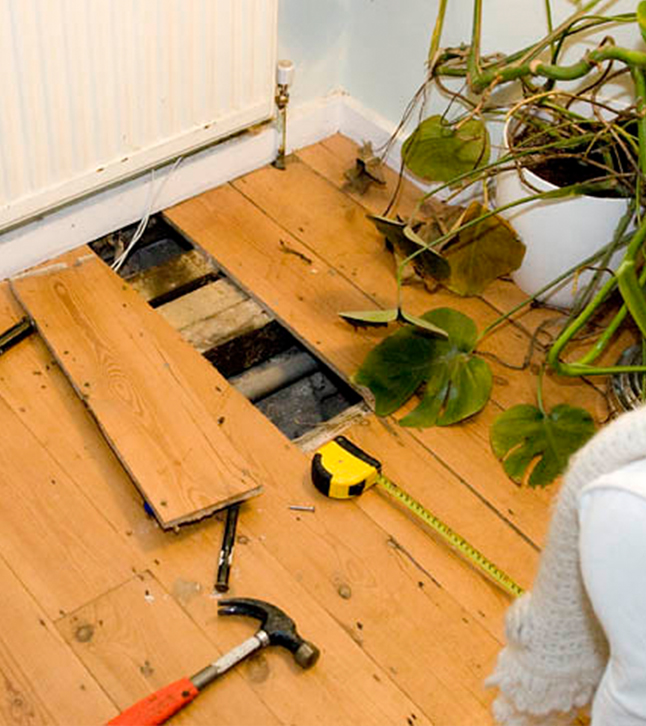Under Floor Insulation
Insulate your Under Floor and Save up
on your Energy Bills
Insulating your Under floor is a great way to keep your property warm as an uninsulated floor can lose roughly 15% of the heat from your home. Underfloor insulation is an extremely efficient and effective way to create thermal efficiency in your home, plus a whole other host of benefits. We have supplied underfloor insulation to many happy people across—all of whom have been extremely satisfied with the results.
One way of doing suspended floor insulation is when there is a cellar or basement beneath the property. This should give easy access to the void below the joists, so insulation can be fixed in place using insulation netting. insulation slab.
If your home doesn’t feature a basement or a cellar, but the floor is still suspended, floorboards and any floor finishing’s will be removed professionally by our installers, this will provide an access to the void below the joists where our installers will add the insulation. Once the insulation is fixed the floor boards will be attached back like before.

Savings
You could save up to £70 each year by insulating an uninsulated Underfloor in a Detached property. Based on the estimates by Energy saving trust
Lowers your fuel bills
Improved Thermal Efficiency
Prevents heat loss through floor
Keeps your home warmer in winter
All figures are based on the estimates by the Energy Saving Trust.
The services are Heavily Subsidised by the government funding. Exact quotation will be provided after initial assessment.
Not all the measures are available for each property.
FAQ's
Underfloor insulation involves adding insulating materials beneath the floorboards or concrete slab of your home, reducing heat loss and improving energy efficiency. This process helps keep your floors and rooms warmer, reducing the need for excess heating.
Underfloor insulation offers several benefits, including:
Enhanced energy efficiency and lower heating bills.
Increased comfort by reducing cold drafts.
Reduced carbon footprint by minimizing energy usage.
Improved damp and sound insulation.
Yes, installing underfloor insulation can significantly improve your home’s Energy Performance Certificate (EPC) rating by reducing energy consumption and heat loss.
There are various underfloor insulation types suited for different flooring structures, including rigid insulation boards for solid floors and mineral wool or foam insulation for suspended timber floors.
The installation process varies based on your floor type. For suspended floors, insulation is typically placed between floor joists. For solid floors, insulation boards may be laid on top, followed by a new floor surface.
Installation time can vary, but most underfloor insulation projects are completed within a day or two. While some disruption is inevitable, professional installers strive to minimize impact and ensure a swift, clean process.
Savings vary depending on your home’s size, insulation type, and existing heating system. On average, households can see significant annual savings on their heating bills
Underfloor insulation is compatible with most floor types, including timber and concrete. However, the insulation method and materials may differ. A professional assessment can determine the best approach for your home.
For a personalized quote and assessment, please contact us directly or fill out the inquiry form on our website. Our team is ready to provide expert advice tailored to your needs.
